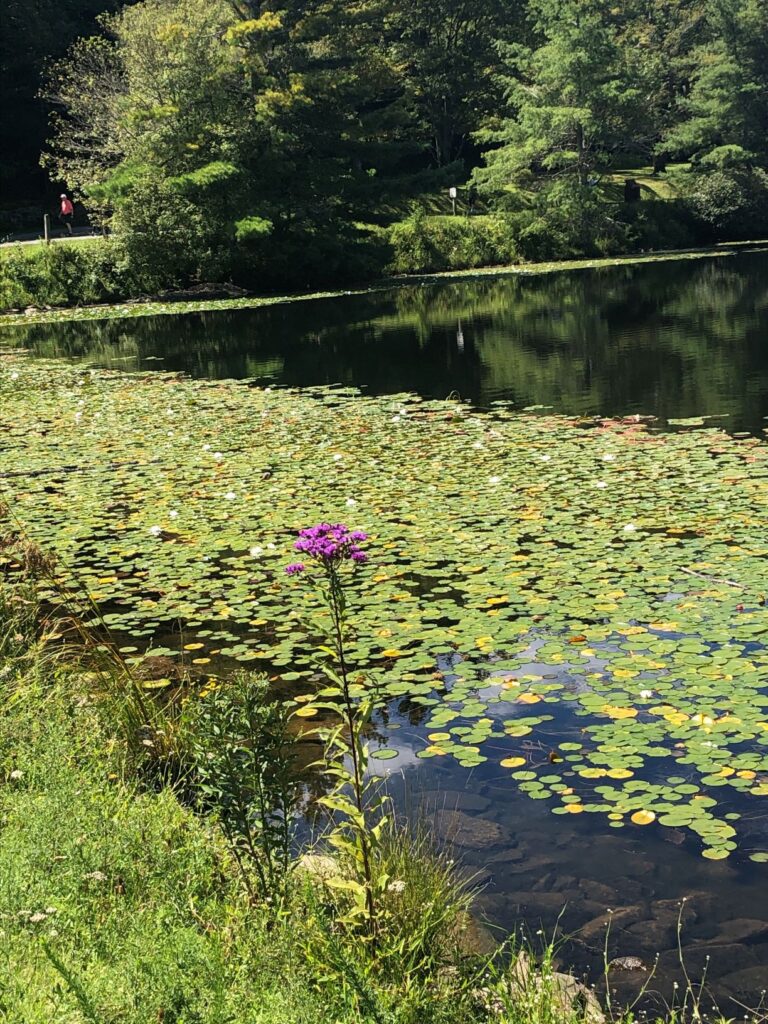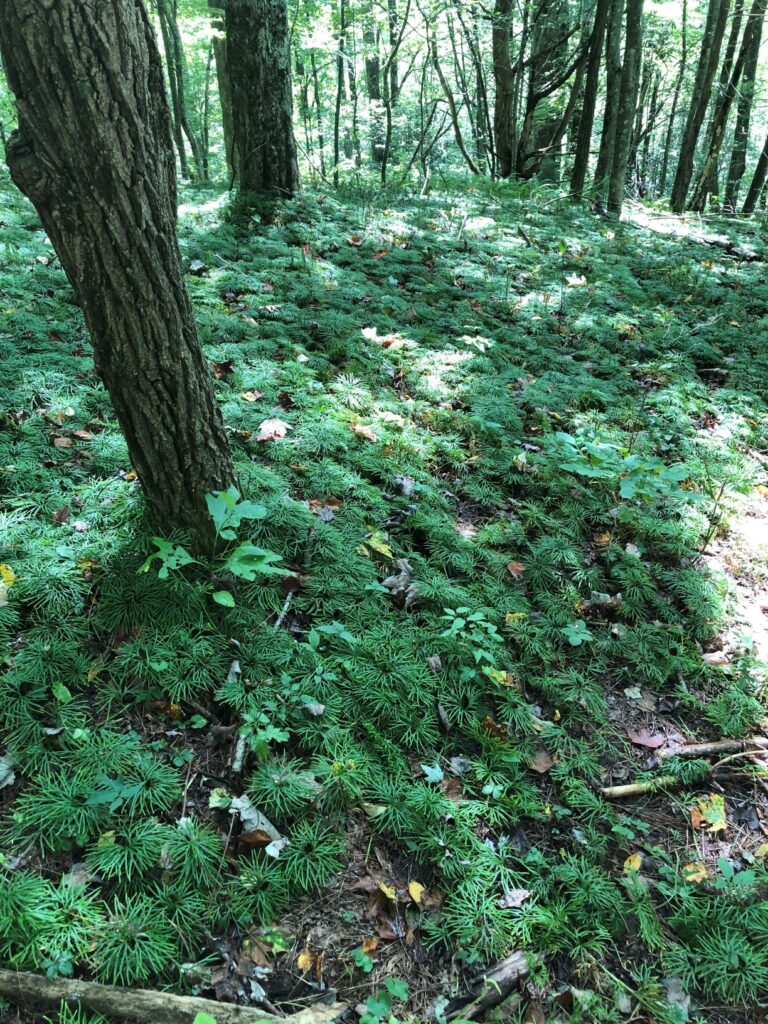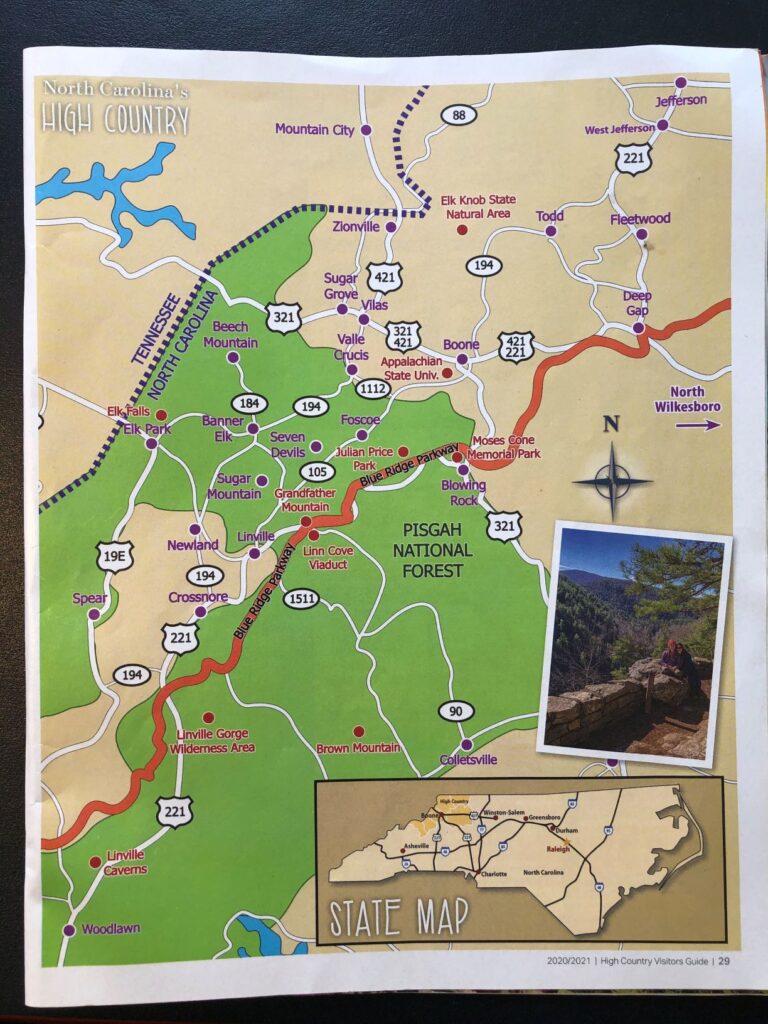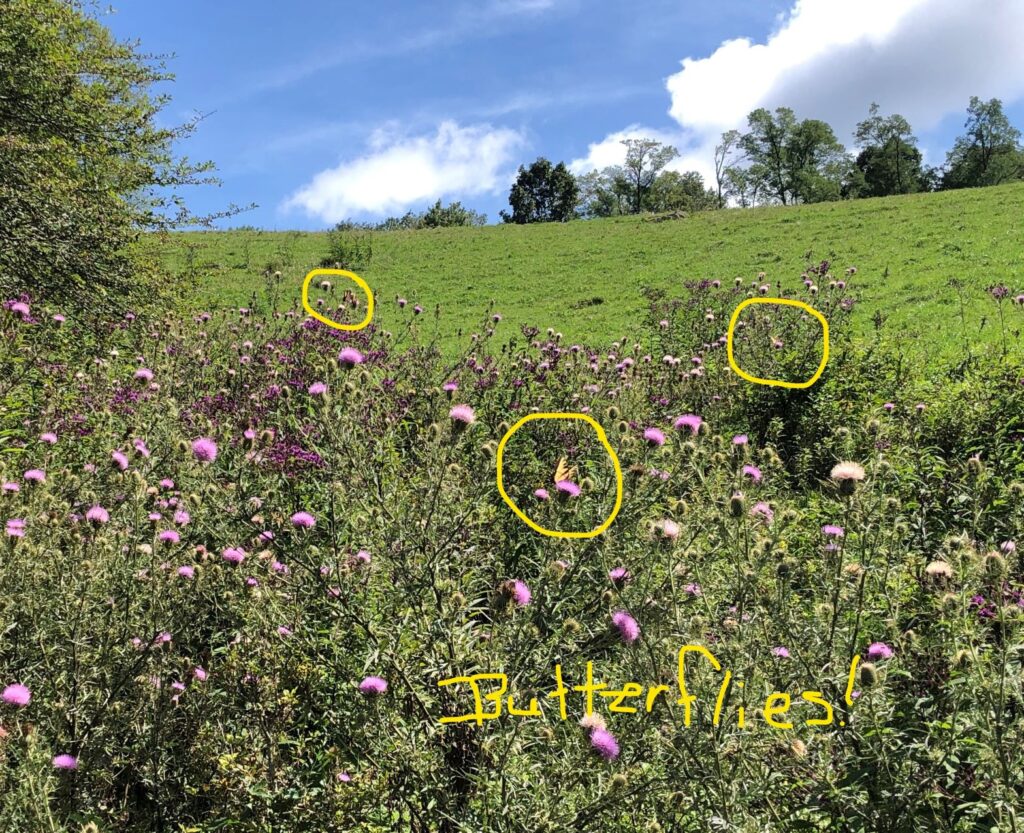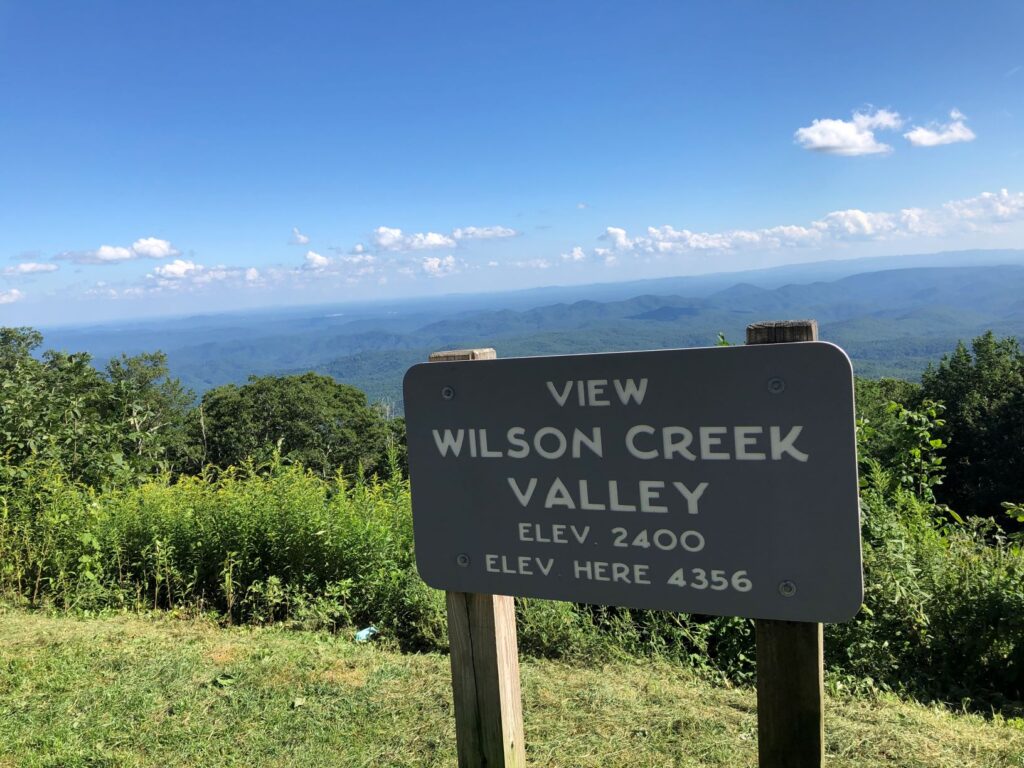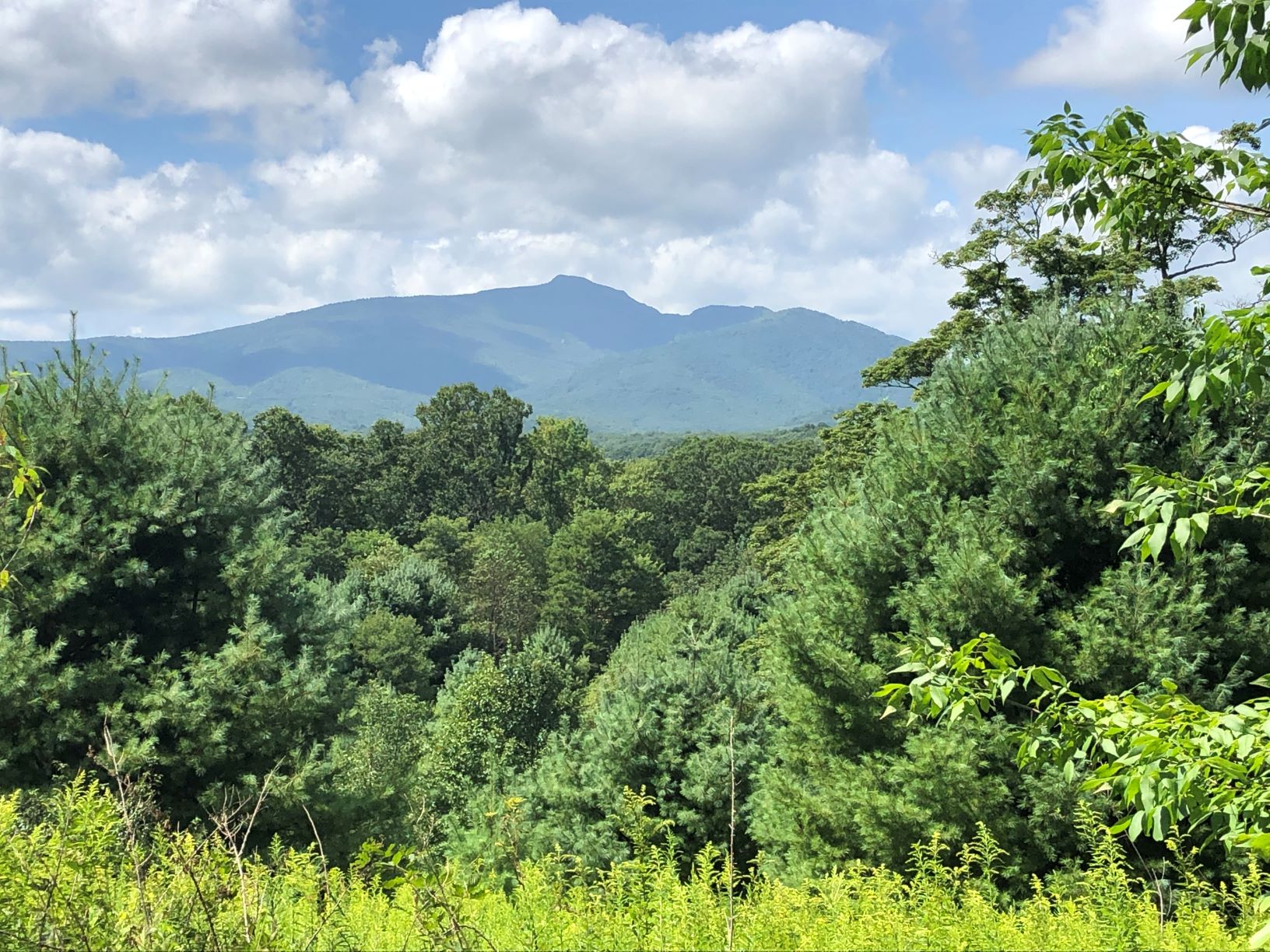A week ago today, I packed up the remnants of my vacation condo and hit the road for home, north along the two-lane path of the Blue Ridge Parkway and down into the North Carolina Piedmont. The early morning was a pristine, still, cool and crystal clear. A series of mountain ridges stretched east, dark teal in the foreground fading to pale blue green by the seventh in the distance. Cities, towns and farms lie deep in those valleys but from here there is no sign of them. High up here, I’m in bluegrass and country music territory and evidently closer to heaven.
WNCW public radio plays gospel from a 1954 Grand Ol’ Opry show, “What a Friend We Have in Jesus.”
Geologically this mountain range runs north all the way to Nova Scotia and south to the convergence of NC, Tennessee and Georgia. To the west are the Appalachians – north from the Adirondacks in New York to the Great Smokies in the South – land pushed up millions of years ago from continental collisions and the upswelling of ocean volcanoes. At one overlook, a couple in portable lawn chairs beside the stone wall edging the hillside coddles coffee mugs reverently as if in morning prayer.
I am grateful for the land. All of it – the solid ground under foot, the cloud-drenched peaks, the woodland carpet of ferns, the mountain lakes. While pandemic “distance” grips elsewhere like a suffocating vice, up here I retrieve soothing inner harmony through panoramic vistas, primeval forests, trickling streams and dancing butterflies in fields of wild thistles. Temporary balance amid relentless imbalance. A friend recently said what we are experiencing in our pandemic restrictions is ennui, to me merely a high-class term for boredom. Here, as in the garden at home, I am reminded that there is a fertile existence that continues and can be rediscovered, eventually.
The National Parks are a fantastic way to escape this ennui. Here’s a terrific resource to download for frequent consultation – the National Park Foundation’s Owner’s Guides to plan your next national park vacation – overall, for kids, by rail, for romance, to lesser known destinations and more. Plus, pages of travel ideas.
Today is my birthday. It is a muted celebration, yet I am comforted by the warm “hug” of the soft breeze, the smiles of the pink verbena and red-orange sage, the wink of the hummingbird flitting from flower to feeder and the dance of goldfinches cruising across the sky – a real-life Jacquie Lawson card. Every birthday and every New Year’s Day I perform certain rituals to set the stage for the “new year.” So today I envision my “new self” for the next 12-month interval to test out for a few hours. What will I choose today from the menu – the appetizer, first, second and dessert courses of exercise, sustenance, delight, inner peace?
The 469-mile Blue Ridge Parkway, managed by the National Park Service through Virginia and North Carolina, has a personal feel. It’s easy to imagine the hands that carved the roads through the wilderness as private and public lands came together for the benefit of all. After a long absence, I had forgotten the impact of its extraordinary visual diversity, dense ancient woods, craggy outcroppings, happy springs. From Skyline Drive in Virginia’s Shenandoah National Park to the granite Humpback Rocks west of Charlottesville that officially start the Blue Ridge Parkway south, I’ve visited, camped, hiked and driven through this area since I was a teenager. This week, after much wandering, coast to coast, I feel I have come “home.”
The day we hiked along the moderately strenuous Green Knob trail in Julian Price Memorial Park we came upon the welcoming face of Grandfather Mountain sleeping comfortably in the distance miles down the parkway; who could have imagined that its formation resulted from chaos and clashing, layering tectonic sheets eons ago? While butterflies danced, we read the plaque about insurance magnate Price, who purchased these 4,200 acres for his employees’ recreation back in the early 20th century; his heirs left the land to the Blue Ridge Parkway so people like me could enjoy its natural beauty.
On my solo walk around Bass Lake in the 3,200-acre Moses H. Cone Memorial Park, Impressionist-quality light reflected from the curving surfaces of water lilies, reminiscent of a Monet landscape that had captivated me once on a much-smaller Giverny pond. In the bright sun, the lake suddenly became inky blue. Halfway up the 3.2-mile trail to the Cone Mansion, direct rays of midday sun on the tin roof of the Apple Barn drew a sharp profile of the 1913 structure, which was built to store 72 varieties from the onetime textile industrialist’s mountain orchards.
In a few weeks the parkway will be overridden with cars and the fall colors parade. I love the mountains in the summer –covered with rhododendron and mountain laurel, conifers and hardwoods, a respite from the outside world. Driving down US 421 through the Yancey Valley, I come upon the first sign of autumn, bushels of Jonagold apples stacked on the loading bays at Sugarloaf Orchards in Taylorsville. I put on my mask and inside purchase a one-peck bag of the lightly tart rose and light green fruit, the final gift of my pandemic retreat.
